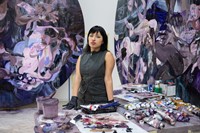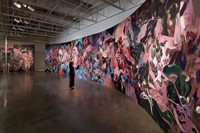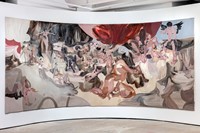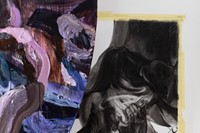As their new exhibition Presagio opens at Fondazione Memmo, Peruvian artist Wynnie Mynerva discusses collective trauma, absorbing themselves in Rome, and seeking “connections with something bigger than us”
First-time visitors to Rome are likely to spend a great deal of their trip looking upwards. On almost every cobbled street is an ancient ruin or Baroque palace, and the city is home to no less than 900 churches – mostly Catholic, and therefore intensely decorative – filled with gilded ceilings and frescoes of heavenly scenes. Taking roots at a residency at Fondazione Memmo in February of this year, Peruvian artist Wynnie Mynerva’s new exhibition Presagio is the result of several months spent exploring the Italian capital, absorbing its artistic splendour and engaging with this expansive act of gazing up. “Recently, I was talking with a friend about the cultural term ‘anthropophagia’ as this has been my way of connecting with Rome,” they tell AnOther. “I feel like I devoured its cultural elements, digested them and transformed them into something of mine.”
Born and raised in Villa El Salvador, on the outskirts of Lima, Mynerva’s multi-disciplinary practice is shaped by collective traumas and the reality of living with a chronic illness. Wielding difficult experiences to look towards “a future of hope”, the slippery bodies found in their work exist beyond binary terms such as ‘male and female’ or ‘sick and healthy’, making space for broader conversations about what it means to be human. The artist’s new show takes after biologist Lynn Marguils’ concept of the ‘holobiont’; an organism composed of several ecosystems that live in symbiosis with each other. Proposing a look at the human body and the organisms it hosts in the same unifying way, the artist hopes to dispel prejudices around illness.
All the works were created while living in a centuries-old apartment and studio space connected to the Fondazione, working alongside their mother and sister over two months. Beyond its searching themes, the residency sees the artist venture into new mediums for the first time, experimenting with charcoal, novel forms of painting and blown glass pieces made during trips to Venice. “At the start of each exhibition, I make a personal declaration which then guides my process,” the artist says of this show. “On this occasion, I approached the work from the position of the sick. I looked at the body, with greater consciousness of my organs, my blood, my skin and fluids. [That made] me feel as if I was a landscape.”
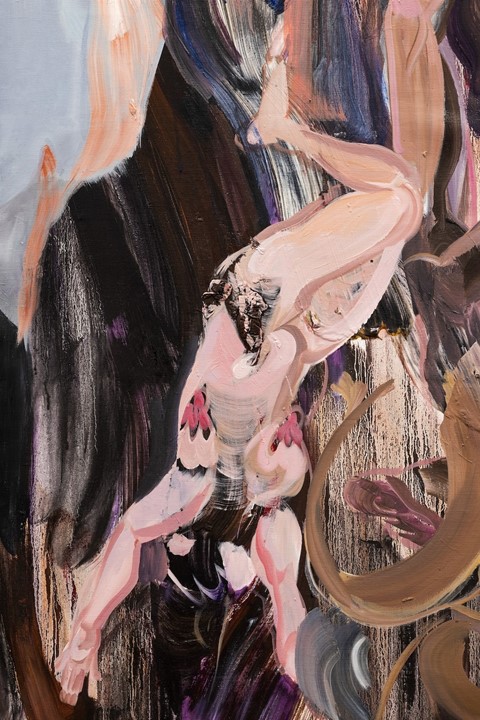
The resulting exhibition takes visitors on a journey from the physical to the spiritual. The first room presents charcoal drawings of sick bodies wrestling in a blur of light and shadow, opening up to a second room where four circular paintings are found on the ceiling. Somewhere between abstraction and representation, in these discs the digestive, respiratory and nervous systems twist together with viruses, forming scenes that resemble celestial configurations. These works gesture to both Rome’s fresco cycles and Virginia Woolf’s essay On Being III, which was written in 1925 in the wake of a nervous breakdown. “Woolf writes that sick people, often bed-bound, have a different view of the world as they spend their time looking up,” says Mynerva. “I hope that by altering the viewers’ point of view, a more authentic self is revealed.”
As well as Woolf, the artist was reading a lot of Susan Sontag at the time of making these works. “I was struck by her critical view of the militarised language around illnesses,” they say. “Sentences like ‘fighting against cancer’ or ‘winning the battle against an illness’ turn the body into a threat and life as a battle. To live with an illness, as Sontag explains, is to live with its metaphors. Throughout history, we have associated various illnesses with different meanings. For instance, leprosy has been linked to poverty and syphilis with promiscuity. With this in mind, I decided to do a series of paintings that represent a cosmic universe, where viruses and the body create kinship and are interconnected.”
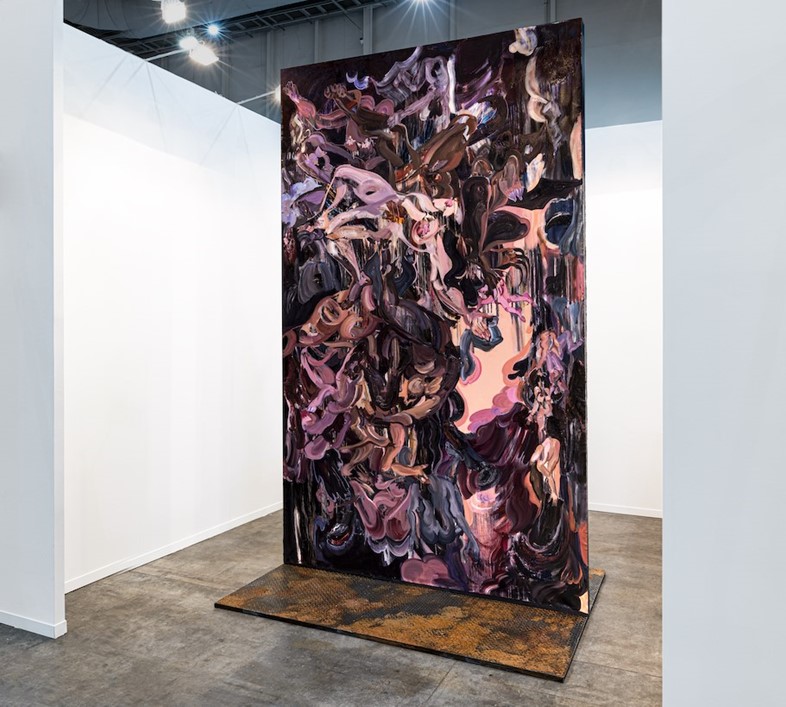
The final room, a small cosy space of Klein blue carpeting and walls, gathers a collection of glass sculptures that Mynerva created alongside artisans in Venice. These wobbly, colourful forms appear to be part-plant, part-animal and part-human, and were breathed into by the artist to create their organic shapes. “This is where fragility and beauty is centre stage, perfectly embodied by glass and its qualities,” the artist says. The product of Mynerva’s very own ecosystem of collaboration – from the artist’s family to curator Alessio Antoniolli – Presagio offers new ways of thinking about the body, illness and our small place in a wider world. “This is an exhibition informed by spirituality, but not in a religious sense,” the artist says. “Instead I am looking for connections with something bigger than us.”
Presagio by Wynnie Mynerva is on view at Fondazione Memmo, Rome, until 3 November 2024.

